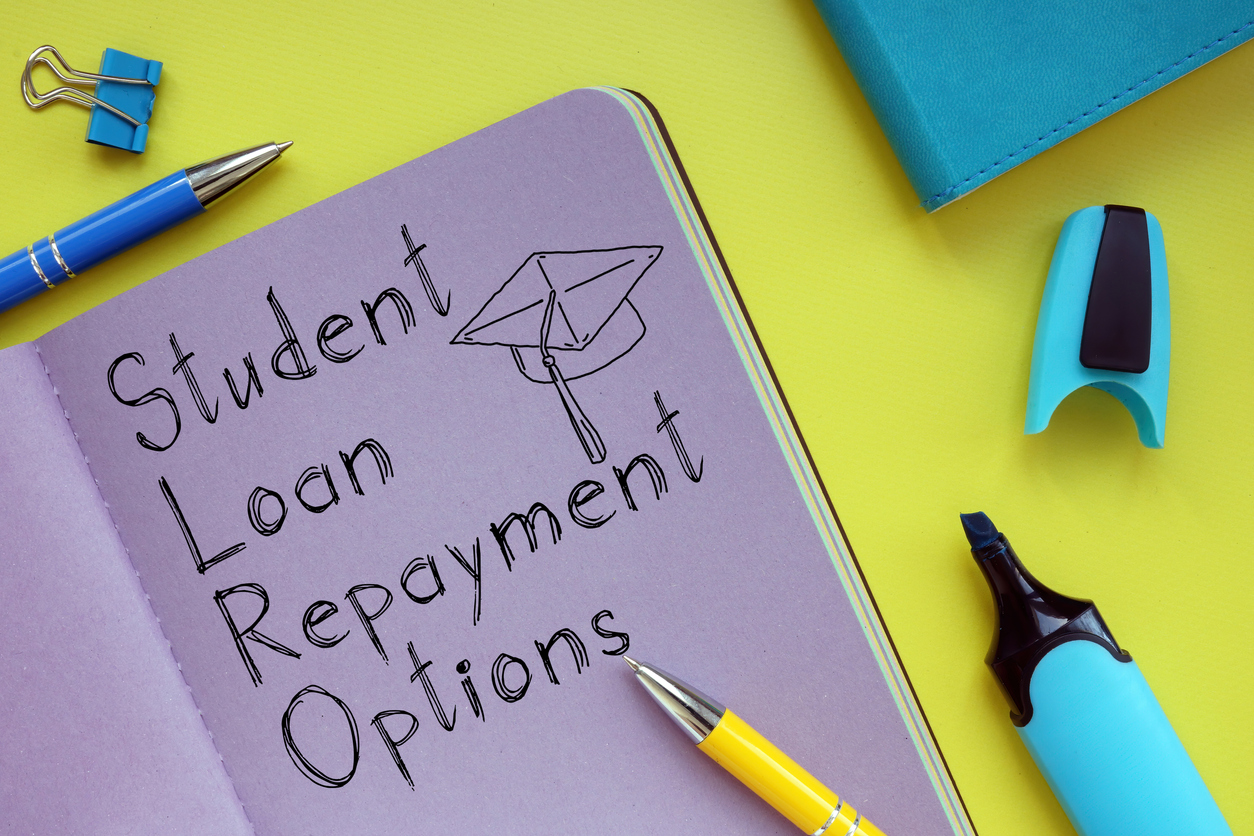A Holistic Approach to Student Loan Repayment Assistance
 Student loan payments are restarting in October 2023, and many borrowers haven’t made payments for over three years. Luckily, changes to income-driven repayment options and one-time account adjustments can have big benefits for borrowers. This article can help you understand how to (1) prepare your employees for student loan payments to restart under the latest rules; and (2) the various repayment assistance programs available to employees to ease the burden of repaying student loans.
Student loan payments are restarting in October 2023, and many borrowers haven’t made payments for over three years. Luckily, changes to income-driven repayment options and one-time account adjustments can have big benefits for borrowers. This article can help you understand how to (1) prepare your employees for student loan payments to restart under the latest rules; and (2) the various repayment assistance programs available to employees to ease the burden of repaying student loans.
I Steps for employees restarting student loan payments:
- Determine who your servicer is and how you’re going to make student loan payments.
- When preparing for student loan payments restart in October, you’ll need to know where to send your monthly minimum payment.
- Your loan servicer is the company who collects payments for your federal student loan(s). Many borrowers experienced loan servicer transfers during the payment pause. If you’re unsure of your current loan servicer(s), login to StudentAid.gov where you can find your servicer details under the My Aid section.
- When you know who your servicer is, log in to your servicer’s website and make sure your contact information is updated.
- Decide how you plan to make monthly payments. You can consider setting up automatic payments (typically offers a 0.25% interest rate discount) or you can manually make payments each month. You could also consider setting up scheduled payments from your bank.
II Repayment Assistance Programs available to employees
Whether or not your organization offers a student loan repayment benefit, consider sharing the following information and resources with your employees and their families.
Recent changes to income-driven repayment can make payments more affordable than ever. Employees who are planning to get Public Service Loan Forgiveness (PSLF) or income-driven loan forgiveness (IDLF) want to find the income-driven repayment plan with the lowest possible monthly payment.
1. Even if an employee is not planning to get loan forgiveness, the SAVE plan may offer the most affordable payment option.
Changes to SAVE (formerly REPAYE) make payments even more affordable for many borrowers.
- Less of your income is considered discretionary, which means lower payments for you!
- Married borrowers who file taxes separately will have less overall income considered for payments.
- Your loan balance won’t grow even if your payments are $0/month.
- The Department of Education will cover any interest not satisfied by the monthly payment.
SAVE might be an even better option than the income-driven repayment plan the borrower is already on.
- Let’s say you’re a borrower making $80,000/year with $65,000 in federal Direct student loans.
- Under the PAYE repayment plan, your current payment is $484/month.
- Under the new SAVE (formerly REPAYE) plan your payment will be $393/month.
- Just by switching from PAYE to SAVE you will save $91/month.
- If you’re pursuing PSLF or IDLF or are struggling with payment affordability the SAVE plan is worth exploring.
2. If you’re pursuing Public Service Loan Forgiveness (PSLF) you need to participate in an income-driven repayment plan.
Remember, you must make payments under one of the four income-driven repayment plans in order for them to be counted toward the 120 qualifying payments.
- SAVE (formerly REPAYE)
- Pay As You Earn (PAYE)
- Income-Based Repayment (IBR)
- Income-Contingent Repayment (ICR)
- You can find the lowest cost option by using the Federal Student Aid Loan Simulator
- Complete the Income-Driven Repayment Plan Request Form on the Federal Student Aid Website.
3. If you’re not pursuing loan forgiveness and are worried about affordability, you have options.
The income-driven repayment plans and extended repayment plan tend to have the lowest monthly payments. Start by exploring monthly payment estimates on the Federal Student Aid Loan Simulator. Pay attention to the payment amount for the income-driven plans and the extended repayment plan. Remember payments made on the extended repayment plan don’t count toward loan forgiveness. If you decide to pursue an income-driven plan, complete the income-driven repayment plan request form to switch.
One time account adjustments can get you closer to loan forgiveness when student loan payments restart.
The Department of Education is giving credit for all past federal student loan payments and certain periods of deferment and forbearance as if they were income-driven payments. That means you could have years of progress toward loan forgiveness.
You don’t need to take any action if your student loans are already Federal Direct Loans. But if your student loans are federal non-Direct loans (such as FFEL or Perkins loans), you need to consolidate your loans by 12/31/2023 to benefit from the account adjustments.
You may qualify for loan forgiveness once the adjustment is applied if you’ve been in repayment for 20-25 years. Everyone else should be notified of the number of ‘income-driven’ payments they’ve made in 2024.
In order to keep making future payments that qualify for either PSLF or IDLF, you will need to repay your loans on an income-driven repayment plan when student loan payments resume in October.
Finally, Secure 2.0, which was passed in December 2022, allows the employer to contribute to an employee's retirement account in the amount the employee is paying towards their student loans. This gives employees the opportunity to pay off student debt and save for retirement.
Jeni Burckart, Vice President, Tuition.io

